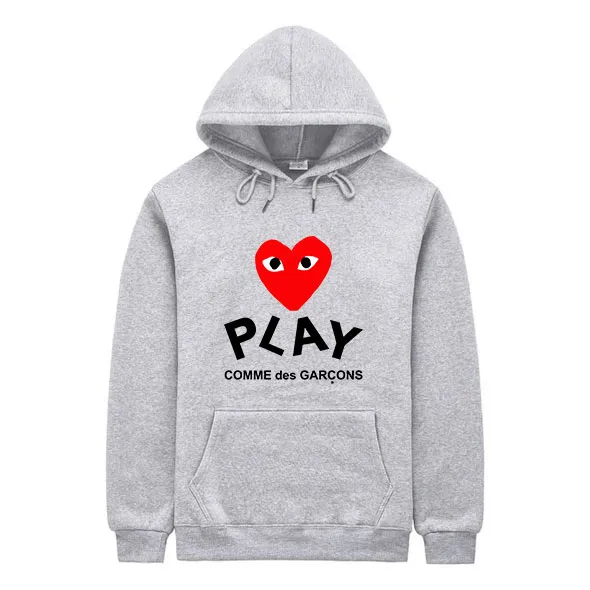Comme des Garçons is one of the most influential names in the global fashion industry. Founded by Japanese designer Rei Kawakubo in 1969, the brand has transformed fashion by challenging conventional ideas of beauty, style, and design. Known for its avant-garde approach, Comme des Garçons blends art, rebellion, and innovation, making it a symbol of creative freedom. From conceptual runway shows to accessible streetwear collaborations, the label has left a lasting impact on both luxury and everyday fashion.
The Origins of Comme des Garçons
Comme des Garçons, meaning “like boys” in French, was established in Tokyo. The choice of name reflects Rei Kawakubo’s vision of questioning gender roles and reshaping traditional aesthetics. Unlike many designers, Kawakubo did not have formal fashion training. Instead, she approached clothing as an art form, using design as a medium for social and cultural commentary.
The brand gained international attention in the early 1980s when it debuted in Paris. Its dark, oversized, and asymmetrical pieces contrasted sharply with the glamorous, body-conscious styles of the era. Critics initially labeled it “anti-fashion,” but it soon became a defining force in shaping avant-garde design.
The Philosophy of Comme des Garçons
At the heart of Comme des Garçons lies a philosophy of disruption. Rei Kawakubo creates not just clothing but concepts that provoke thought and emotion.
Core principles include:
-
Deconstruction: Breaking apart traditional garments to expose seams, distort proportions, and redefine silhouettes.
-
Gender Fluidity: Many designs blur the lines between menswear and womenswear.
-
Minimalism and Maximalism: Alternating between stripped-down basics and bold, sculptural creations.
-
Fashion as Art: Runway shows often resemble performances or installations, making audiences question the role of clothing in culture.
This approach has influenced countless designers and made Comme des Garçons a cultural as well as a fashion powerhouse.
Sub-Labels and Product Lines
Comme des Garçons has expanded into a diverse set of sub-labels, each catering to different audiences while staying true to the brand’s DNA.
-
Comme des Garçons Play: The most popular line, known for minimalist basics like t-shirts, hoodies, and sneakers featuring the iconic red heart logo designed by Filip Pagowski.
-
Comme des Garçons Homme: Focused on menswear, combining tailoring with experimental details.
-
Comme des Garçons SHIRT: Dedicated to reimagining the classic shirt through patchwork, prints, and unusual cuts.
-
Comme des Garçons Black: A more affordable, monochrome-focused line.
-
Comme des Garçons Parfums: Offering unique, unisex fragrances often described as unconventional yet sophisticated.
This ecosystem allows CDG to appeal to both high-fashion enthusiasts and everyday consumers.
Collaborations That Defined CDG
Comme des Garçons has been a pioneer in collaborative fashion, creating partnerships that bridge luxury and street culture. Some of the most successful include:
-
Converse: The CDG Play x Converse sneakers are globally recognized, with the signature heart logo becoming a streetwear staple.
-
Nike: Innovative sneaker designs blending sportswear with avant-garde styling.
-
Supreme: A collaboration merging high fashion with urban streetwear.
-
H&M: A 2008 capsule collection that made CDG designs accessible to mass audiences. comme-des-garcons.uk
These collaborations highlight CDG’s ability to stay relevant across multiple fashion communities.
Cultural Influence of Comme des Garçons
Comme des Garçons has shaped fashion far beyond clothing. Its impact is felt across art, music, and popular culture.
-
Celebrities: Stars like Rihanna, Kanye West, Pharrell Williams, and Lady Gaga frequently wear CDG, increasing its visibility.
-
Runway Legacy: Kawakubo’s shows are celebrated for their theatrical, conceptual nature, often sparking global conversations.
-
Museum Recognition: In 2017, the Metropolitan Museum of Art’s Costume Institute dedicated an exhibition to Kawakubo titled “Art of the In-Between”, solidifying her influence in both fashion and art history.
By merging creativity with cultural dialogue, Comme des Garçons has built a lasting legacy.
Shopping Comme des Garçons
Comme des Garçons products are sold worldwide through flagship stores, luxury retailers, and online platforms. Flagship stores in Tokyo, Paris, London, and New York are designed as conceptual spaces, reflecting the artistic identity of the brand.
The Play line offers the most accessible entry point, with t-shirts and hoodies priced between $100 and $300, while sneakers like the CDG Converse retail between $135 and $150. On the other end, runway pieces and couture-level designs can cost thousands of dollars, appealing to collectors and fashion connoisseurs.
Why Comme des Garçons Stands Out
In an industry driven by trends, Comme des Garçons remains unique because it resists conformity. While other brands chase popularity, CDG focuses on artistic expression. This bold approach has allowed it to stay at the forefront of fashion for over five decades.
Key reasons for its enduring success include:
-
A fearless approach to experimentation.
-
Strong global collaborations bridging different markets.
-
The ability to balance exclusivity with accessibility.
-
Cultural influence beyond fashion, extending into art and social commentary.
Conclusion
Comme des Garçons is not just a brand; it is a movement in fashion history. Rei Kawakubo’s vision has challenged norms, inspired generations, and blurred the line between clothing and art. From conceptual runway shows to globally popular CDG Play sneakers, the brand represents creativity, individuality, and timeless innovation.



